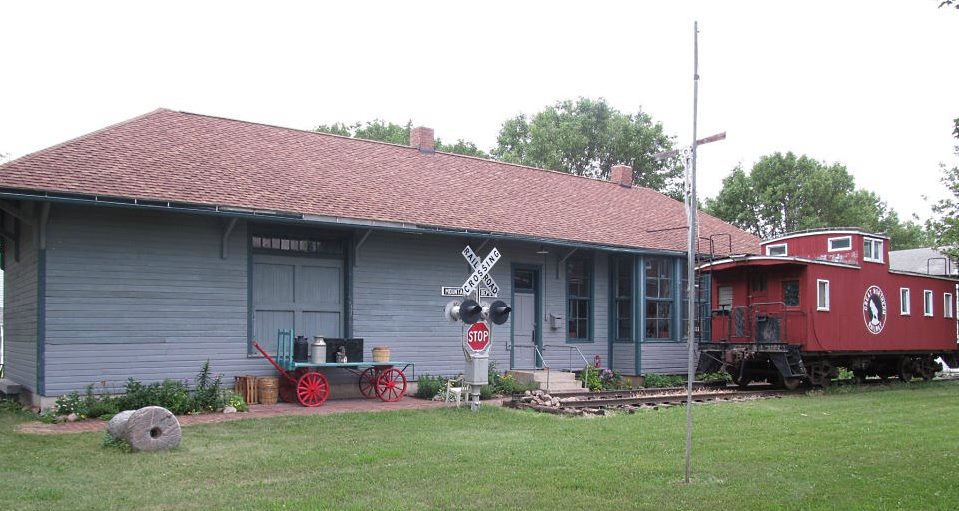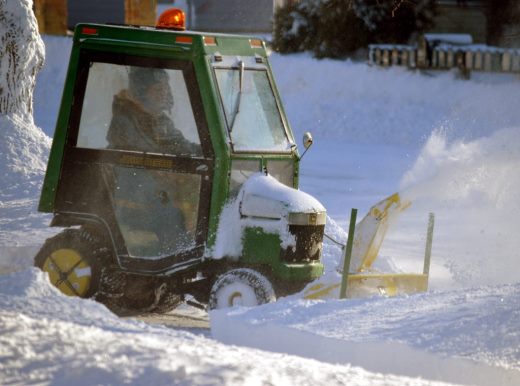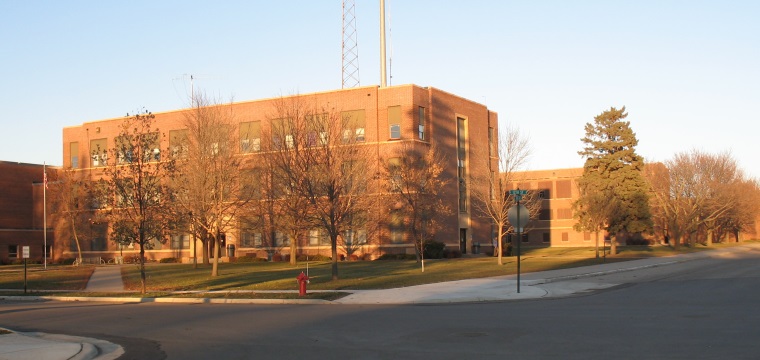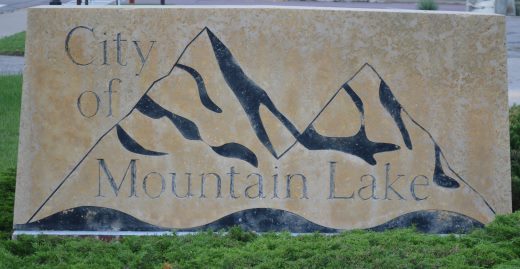Study provides overview of now, peek at future; Mountain Lake EDA, Chamber Director Rob Anderson addresses that outlook

For those of us who have spent our lives in rural Minnesota – southwest part of the state to be exact – we knew it first hand, had experienced it, seen it and, perhaps, have suffered because of it.
Now, that “it” has been laid out in graphs, charts and words for all to see in a recently-released study from the Center for Rural Policy and Development, based in Mankato. Those findings cement the observations made by those living in rural Minnesota over the past half-century.
Those findings additionally note that there are big changes ahead for rural Minnesota.
According to the report, Minnesota is getting older and more ethnically diverse, especially in rural parts of the state.
Since 1960, there has been an unstoppable population shift – a 50-year migration from rural Minnesota to the urban corridor that stretches from St. Cloud southeast through the Twin Cities metro area and on to Rochester.
There are fewer and fewer farmers, with farms getting farther apart.
The study found that in 12 counties (the majority in northeast Minnesota), 50% of the population is age 65 and older. However, on a positive flip side, seven rural counties show population gains due to immigration of minority groups, including two in southwestern Minnesota – Clearwater, Fillmore, Lyon, Mahnomen, Mower, Nobles, and St. Louis.
While the vast majority of Minnesota remains white, but the Center’s report uncovered that immigrants of color had more than doubled since 1990 — from 6.3%to 14.5%. Rural Minnesota is re-populating with a number of groups including Latinos, Laotians, Somalis, Sudanese and Hmong. There are 114 different spoken languages, many of them in the southern counties.
Projecting to 2045, the biggest population drain is projected to be in the southwest and northeast opposite ends of the state. The biggest gains will come in the southeast. The fasted growing county in Minnesota since 1960 is Sherburne County – the home county of cities such as St. Cloud, Elk River, Princeton, Becker, Big Lake, Clear Lake and Zimmerman. In fact, the county’s population grew 601% over the past half-century.
The report notes that job growth in rural Minnesota will be in food processing, health care and manufacturing.
Center for Rural Policy and Development specs
The study’s report – State of Rural Minnesota 2014 – was presented by the Center’s Brad Finstad. Finstad, a native of St. James, served District 21B (Brown, Redwood and Watonwan Counties) in the Minnesota House from 2003-2008.
The Center for Rural Police and Development, a non-partisan, non-profit policy research organization dedicated to providing Minnesota’s policy makers with an unbiased evaluation of contemporary issues form a rural perspective was organized in 1997.
Information for the study was obtained from: the United States Census Bureau, the Minnesota State Demographic Center, the United States Department of Commerce, the Minnesota Department of Employment and Economic Development and the Minnesota Department of Education.
A link to the complete study can be found at: http://www.ruralmn.org/publications/state-of-rural-minnesota/
The study’s ‘nuts-and-bolts’

* Looking at how the population has changed since 1960 shows the relentless shift from the rural counties to the urban and suburban cores of the Twin Cities, St. Cloud and Rochester. (See above.)

* From 1990 to 2013, the state’s population grew by approximately 1 million – to 5.4 million. The most dramatic growth was seen in the Twin Cities suburbs, stretching up into the Central Lakes area. (See above.)
* It is projected (through 2045) that the state’s northeastern and southwestern counties will lose population, while growth will continue to radiate out from the Twin Cities, and north into the Central Lakes region – with some substantial growth in southeastern Minnesota.

* The fast-growing counties with young families, large institutions of higher education or large minority populations, tend to have a lower median age. (See above.)
* The state’s population of those age 19 and under is projected (through 2045) to stay highest in the Twin Cities suburbs. However, some rural counties – Blue Earth (includes Mankato), Clay (includes Moorhead), Lyon (includes Marshall) and Nobles (includes Worthington) – are projected to have a comparatively higher percentage of young people, most likely due to the presence of a college or university or a large minority population. As well, those same counties, and for the same explanations, are projected to buck the numbers in increased aging.

* Projected to 2045, the trend in aging (age 65+) is expected to follow the same course as it has in rural Minnesota – and even increase in counties attracting retirees. The highest percentages are expected to be seen in the state’s northeastern counties. (See above.)

* In reflecting on shifts in minority population, the northern counties of Minnesota saw little change from 1990-2012, as their Native American populations were relatively stable. Many of the state’s western and southern counties saw a dramatic growth with the immigration of Latinos, Laotians, Somalis, Sudanese, Hmong and other groups. But still, the highest growth was in the ring suburbs around the Twin Cities of Minneapolis and St. Paul. (See above.)

* While the majority of Minnesota’s population is Caucasian, the state’s population of color has more than doubled since the 1990 Census, increasing from 6.3% to 14.5% in 2012. Cities in the north tend to have large Native American populations, while Latinos and Somalis make up the largest minority groups in western and southern Minnesota. In fact, nine counties experienced population growth in the course of those 12 years expressly due to the growth of minority populations. Of those, seven ARE NOT in the a Metropolitan Statistical Area. Two of those nine counties are in southwestern Minnesota. Lyon County had a decrease in white population of 1,257 and an increase in minority population of 2,182, for a change in total population of 925. Meanwhile, Nobles County saw a decrease in white population of 1,643 and and increase in minority population of 2,894, for a 1,251 change in total population. Other counties include Clearwater, Fillmore, Hennepin, Mahnomen, Mower, Ramsey and St. Louis. (See above.)

* In 2012, Minnesota’s estimated median household income was $58,828. Incomes are highest around the Twin Cities metro area, especially in the more affluent suburban counties that ring the core two cities. Scott County had the highest estimated median household income at $86,324, while Wadena County in western Minnesota recorded the lowest at $37,577. (See above.)

* Farming has had a strong presence in Minnesota historically – and still does today. The distribution of wealth from farming is apparent. (See above.)

* However, only about 2.6% of the state’s workforce is employed directly in farming. That figure varies a lot across the state. Some counties have 20% or more of their workforce working directly in farming (Cottonwood, Jackson and Watonwan Counties have from 9% to 13.9% of their workforce employed in farming, while Brown and Martin Counties have 5% to 8.9% of their respective workforces). (See above.)

* Earnings from retail tend to be some of the lowest of any industry. The highest retail earnings cluster around the Twin Cities. The average earnings from retail for the state in 2012 were $25,341. (See above.)

* Approximately 10.7% of the workforce works in the retail sector. Retail centers can be seen around the state. Although the Twin Cities has some of the highest total earning in retail, its low percentage of workforce in retail, compared to the rest of the state, shows a more diversified economy. (See above.)

* The average public assistance monthly payment Minnesota in 2011 (per capita) was $705. This report classified as public assistance the following – family assistance, food stamps (SNAP), general assistance, supplemental security payments and other income maintenance benefits. It DID NOT include medical payments or farm program payments. Payments per capita in Cottonwood County and Watonwan County were between $650 and $724 per month, while in Brown County and Jackson County, those numbers were from $550 to $649 a month. (See above.)
* The diversity of students continues to climb in the core Twin Cities school districts and in suburban districts. While most of rural Minnesota remains white, pockets of diversity can be found around the state. Native American students make up this population in the northern school districts, while southern districts are home to largely immigrants of Latino, African and Asian origin.
* Understanding the eclectic array of languages spoken at home is important for schools as they design effective curriculums. Anoka-Hennepin School District is tied with St. Paul School District for having the largest number of languages spoken at home in their districts – 112 – followed by the Rosemount-Apple Valley-Eagan School District at 92.
The road to the future for rural Minnesota, specifically Mountain Lake area
Now armed with information on what rural Minnesota will look like in the years ahead – what is the road to the future to keep communities strong, viable and growing?
Mountain Lake Economic Development Authority (EDA) Director, as well as Mountain Lake Area Chamber of Commerce Director Rob Anderson shares his ideas on how to accomplish this task.
Anderson also describes the report as, “Not really news for those living in rural Minnesota and certainly reflects what is happening economically and demographically here in Cottonwood County.”
For this specific area of the state, Anderson adds, “In Mountain Lake we are coming off one of the best economic development years that the city has ever had with three major business start-up and expansions, six million dollars of capital investment and the creation of 37 new jobs in the community.”
In relation to the population shift from the rural area to the metro, as well as the influx of minority populations to out-state Minnesota, Anderson notes, “As the population drain continues to the metro areas of the state (including Mankato/North Mankato, MSP designated in 2008) Mountain Lake is fortunate to be one of the areas of the state where minority groups have increased in population – and this demographic has helped employers fill vacant job openings. As the county and state unemployment rate hovers at or below 4%, economic growth has allowed employers to increase wages in hopes of attracting workers – and this is having a positive economic impact on the community through increases in new home purchases, retail sales and expendable income.”
With the study’s focus on future job growth in rural Minnesota coming from food processing, health care and manufacturing – three areas in which Anderson agrees this area has already seen play out – he stresses that, ” We are still a rural economy that relies heavily on agriculture. The excitement of an economic turnaround has been somewhat tempered by low farm commodity prices. The farmers that I have talked to have been through this (low prices) before and realize that farm markets are cyclical and will eventually turn around – and when they do, wealth from farming will increase accordingly.”
As Anderson peers into the future of rural Minnesota, specifically the Mountain Lake area, he attests that what has been done “now” will positively serve as a platform for the “then.” “Mountain Lake has been able to maintain its population – and has seen a small increase. I think this can be directly attributed to progressive economic and community investment policies and a strong desire from community leaders to increase the quality of life for local residents and to plan for future growth.”


















